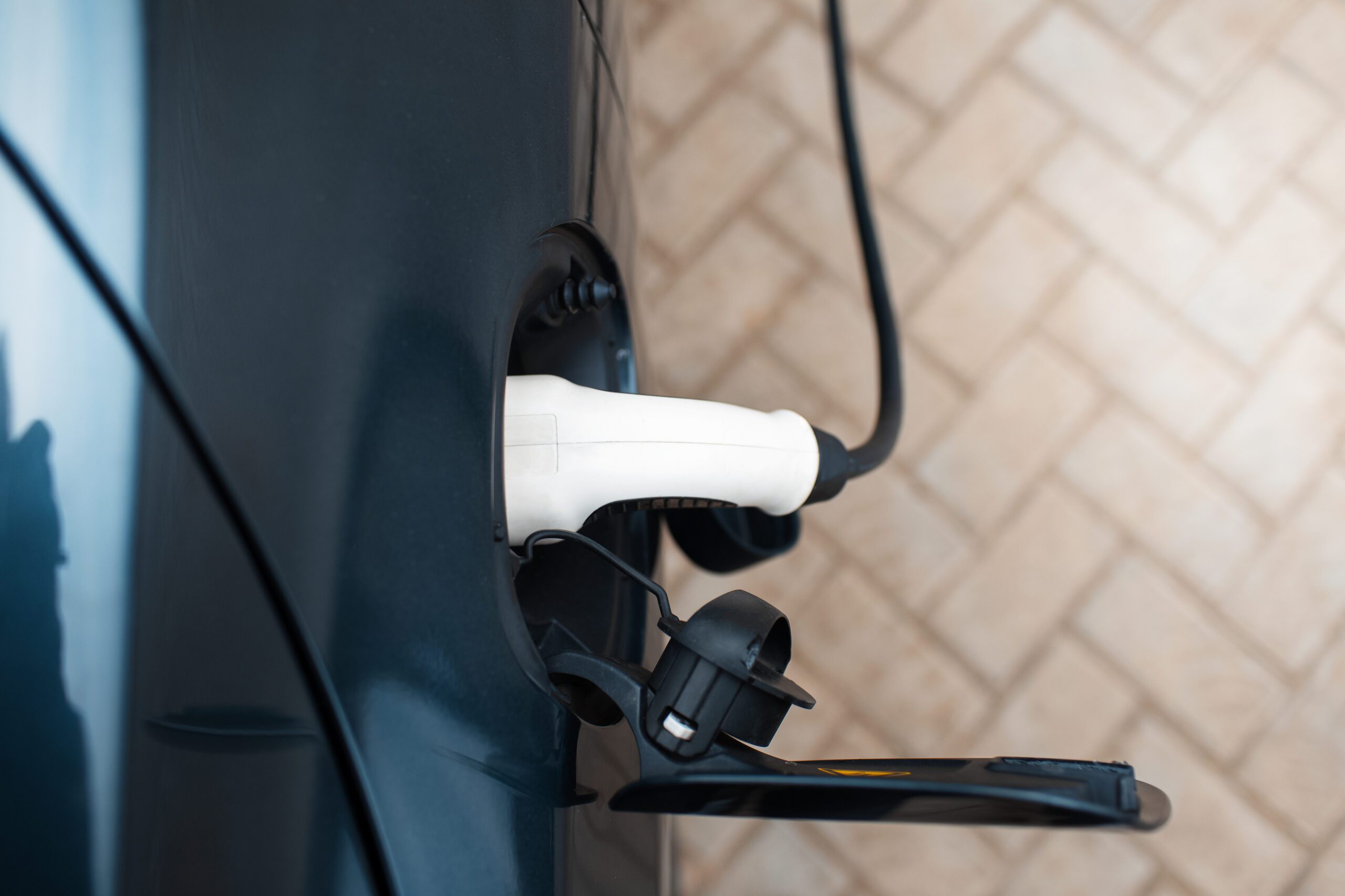An intro to EVs
Electric vehicles (EVs) are vehicles that are powered by an electric motor and a rechargeable battery instead of an internal combustion engine (ICE) that burns fossil fuels. They use electricity stored in a battery pack to power an electric motor that turns the wheels, rather than relying on gasoline or diesel fuel.
There are two main EV types: battery electric vehicles (BEVs) and plug-in hybrid electric vehicles (PHEVs).
- BEVs run entirely on electricity and have no internal combustion engine. They must be plugged into an external power source to recharge their battery packs. They have a limited driving range per charge but are more efficient and produce no emissions.
- PHEVs, on the other hand, have both an electric motor and an internal combustion engine. They can run on electricity alone for a limited distance, after which the gasoline engine takes over. They can also be plugged in to recharge the battery pack. PHEVs have a longer driving range than BEVs but are less efficient and still produce emissions when running on gasoline.
EVs have gained in popularity in the UK in recent years, driven by increasing environmental considerations among consumers, lower operating costs, government incentives and improved technology, the latter of which has made EVs more efficient, with longer ranges, and more reliable than earlier models. In fact, in December 2022, electric vehicles achieved their highest-ever monthly market share, making up almost one-third of all newly sold cars.
Over the course of 2022, electric cars accounted for nearly 17% of sales, exceeding the sales of new diesel cars for the first time. This trend towards EV adoption will likely continue in the UK, in line with the government’s ambitions of phasing out the sale of new petrol and diesel vehicles by 2030.
Find out more on EVs in our electric car pages.
Wide-ranging impact on the electricity market
As more and more EVs are introduced into the UK fleet, there will be knock-on effects on the electricity market, and with it will come new opportunities and challenges for electricity companies to deal with.
Increased demand for electricity: As more people switch to EVs, the demand for electricity will increase. This could put pressure on the electricity grid, particularly during peak charging times when many EVs are being charged simultaneously. Utilities will need to ensure that there is enough supply to meet this increased demand. This also creates increased opportunities for utilities to capitalise on the increased demand.
Changes in the timing and pattern of electricity demand: EV charging can be a flexible load, which means that it can be shifted to different times of day. This could change the electricity demand pattern, as more people start charging their EVs overnight when demand is typically lower. This could help to reduce the need for new power plants and other grid infrastructure, reducing capex costs for utilities. The flexibility load EVs provide could bring benefits in terms of grid balancing and provide new opportunities for the integration of renewable energy sources, such as wind and solar, into the system.
Vehicle-to-Grid (V2G) technology: V2G technology allows EVs to not only draw power from the grid, but also to send power back to the grid. This can provide additional revenue streams for electricity companies, as they can use EV batteries to store excess renewable energy and sell it back to the grid when demand is high.
Potential for new business models: The rise of EVs could create new business opportunities for utilities and other companies involved in the electricity market. For example, utilities could offer EV charging services or partner with car manufacturers to offer bundled services.
The rise of ‘Green’ EV tariffs
Many electricity companies are now offering electric vehicle tariffs to their customers. These tariffs are specifically designed to encourage the use of electric vehicles by providing discounted electricity rates during off-peak hours, which typically coincide with times when the electric grid has excess capacity.
EV tariffs often use renewable energy-sourced electricity because it is more sustainable and environmentally friendly than electricity generated from fossil fuels. EVs are widely regarded as a greener alternative to traditional petrol or diesel cars because they produce fewer emissions and have a smaller carbon footprint.
However, if the electricity used to charge EVs is generated from non-renewable sources such as coal or natural gas, the environmental benefits of EVs may be diminished.

Using renewable energy to power EVs can help to reduce greenhouse gas emissions and support the transition to a low-carbon economy. Many EV tariffs are designed to incentivize using renewable energy sources, such as wind, solar, and hydroelectric power, by offering lower rates for customers who charge their EVs with renewable energy.
See which energy suppliers are offering EV tariffs
The latest view on which UK energy suppliers have active EV tariffs
| Supplier | EV Tariff | Notes |
|---|
The latest EV tariffs on the market
Search and compare EV tariffs
| Supplier | Tariff name | Tariff type | Daily standing charge - electricity | Unit rate electricity (per kWh) | Green electricity? | Exit fees | Location | Notes |
|---|



